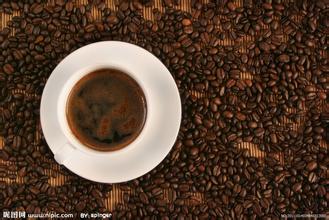Description of St. Helena Coffee Flavor introduction to Grinding scale of Variety treatment method in Manor area
Description of St. Helena Coffee Flavor introduction to Grinding scale of Variety treatment method in Manor area
Napoleon, as a coffee fanatic, came ashore and lived in Longwude Manor, where he began to write memoirs, dictated by him, and recorded and sorted out by the adjutant brought with him. During his exile from 1815 to 1821, the French dwarf praised St. Helena's coffee, which began to attract the world's attention and became popular in Paris. Beg for St. Helena's coffee before Napoleon's exiled Helena Island is about to die. His adjutant, Marshal Bertrand, said: I can't help but turn red when I see this once awesome man begging for a spoonful of coffee.
A man who has conquered the world is conquered by a cup of coffee and does not forget such a cup of coffee even when he is dying. Perhaps only those who have drunk this cup of coffee can really realize the secret of it, right?
The source of the seed
On February 10, 1733, a ship from the British East India Company (The East India Company) from the Yemeni port of Moka brought Green Tipped Bourbon Coffee seeds, which began to be planted all over St. Helena and grew luxuriantly, even if neglected.
Once, the French proudly announced to the world that they have their own coffee, which is not from Arabia, but from their native "Bourbon". Their coffee is naturally different from Arabian coffee-round, whether it is intentional or ignorant by the French at that time, and really makes most people think that Bourbon Coffee is really the origin of Bourbon. It was not until the British planted round coffee with the isomorphic characteristics of Bourbon Island that the French lie came to light, because St. Helena's coffee in England had nothing to do with Bourbon Island at all. and the source is actually the same place-Yemen Mocha. Subsequently, this coffee, which was completely different from Tibica, quickly spread to Central and South America with colonial expansion.
cut a striking figure
When Napoleon was exiled on the island of St. Helena from 1815 to 1821, he praised St. Helena's coffee. St. Helena caffeine began to attract the world's attention and became popular in Paris.
It is becoming popular.
In 1839, Wm Burnie & Co, a London coffee merchant, said: "We introduce St. Helena Coffee to the industry, and its quality and flavor are consistently respected."
In 1845, St. Helena Coffee became the most expensive and unique coffee in the world at a price of 1 pence per pound.
In 1851, coffee grown on St. Helena Island was favored by judges at a coffee exhibition in London (The Great Exhibition).
The light is dim
Although St. Helena coffee enjoyed high praise in the 19th century, the popularity did not continue, and even St. Helena Islanders seldom drank it afterwards.
rally
When David R.Henry visited St. Helena in 1986, he was honored to have a taste of the island's coffee with the Governor of St. Helena. This batch of coffee is grown in Plantation House, the Governor's residence on St. Helena Island, where a 260-year-old land turtle also lives, witnessing the origin and long history of St. Helena Coffee.
The present St. Helena
St. Helena Island Coffee Company grows and handles coffee in a rigorous organic way and on its own basis. although it is remote and has not yet obtained official certification for organic cultivation, it is already in progress. St. Helena uses only natural fertilizers and livestock droppings are not used as fertilizers because feed or artificial farming processes may make their faeces contain non-organic matter. St. Helena is lucky to have plenty of bird droppings, which are collected from coastal rocks as natural fertilizer, dried and sprinkled under coffee trees at the beginning of the rainy season. St. Helena uses natural spring water from the mountains to wash coffee beans.

Important Notice :
前街咖啡 FrontStreet Coffee has moved to new addredd:
FrontStreet Coffee Address: 315,Donghua East Road,GuangZhou
Tel:020 38364473
- Prev

Flavor description of Panamanian Coffee introduction to the Regional treatment of Flower Butterfly species
Panamanian coffee flavor description taste flower butterfly variety characteristics regional treatment method when the commodity price of coffee is still relatively low, the Panamanian boutique Coffee Association organized a competition called Best Panama: coffee beans from different parts of Panama were ranked and auctioned online. Esmeralda Manor has been growing a plant called Geish for many years.
- Next

Flavor description of Brazilian Hilado Coffee introduction to the varieties of Grinding Calibration by Regional treatment in Manor
Brazilian Hilado Coffee Flavor description Taste the variety of grinding scale for regional treatment of manor production is introduced, which we reached today. The Kaseru establishment, quality assurance has previously been neglected, based on the logistics bar code, commodity exports, can now balance the production history. In 2003, on the basis of the American (SCAA) Special Coffee Association and conclusion, the SCAA flavor type of coffee will be promoted.
Related
- Detailed explanation of Jadeite planting Land in Panamanian Jadeite Manor introduction to the grading system of Jadeite competitive bidding, Red bid, Green bid and Rose Summer
- Story of Coffee planting in Brenka region of Costa Rica Stonehenge Manor anaerobic heavy honey treatment of flavor mouth
- What's on the barrel of Blue Mountain Coffee beans?
- Can American coffee also pull flowers? How to use hot American style to pull out a good-looking pattern?
- Can you make a cold extract with coffee beans? What is the right proportion for cold-extracted coffee formula?
- Indonesian PWN Gold Mandrine Coffee Origin Features Flavor How to Chong? Mandolin coffee is American.
- A brief introduction to the flavor characteristics of Brazilian yellow bourbon coffee beans
- What is the effect of different water quality on the flavor of cold-extracted coffee? What kind of water is best for brewing coffee?
- Why do you think of Rose Summer whenever you mention Panamanian coffee?
- Introduction to the characteristics of authentic blue mountain coffee bean producing areas? What is the CIB Coffee Authority in Jamaica?

